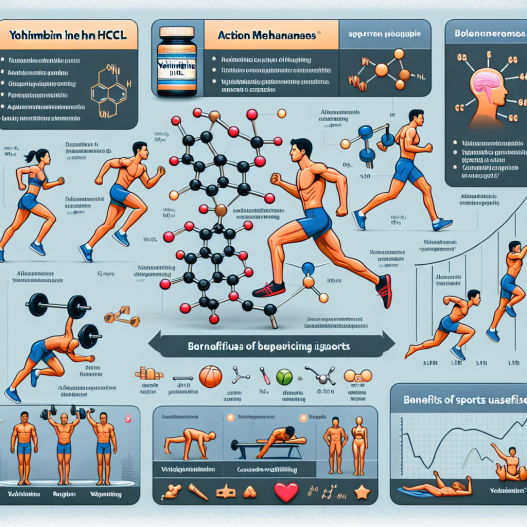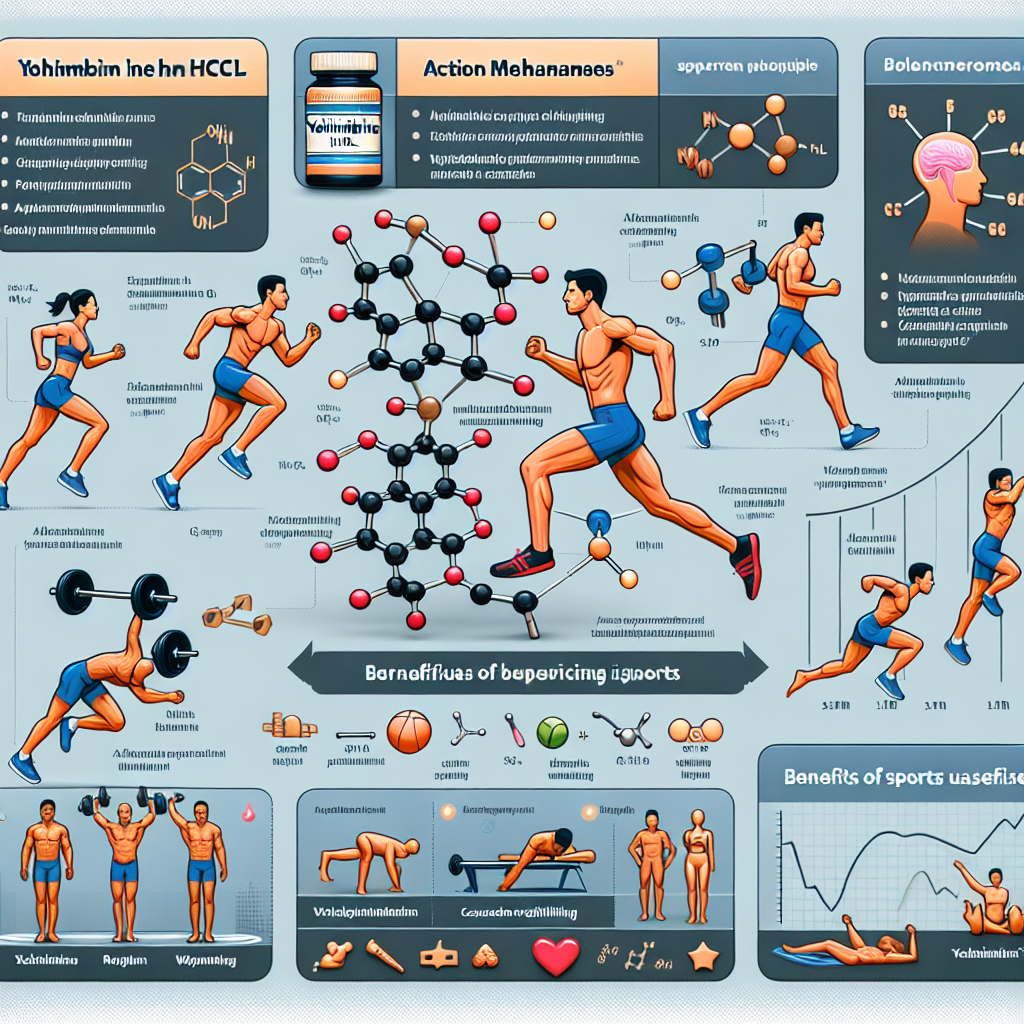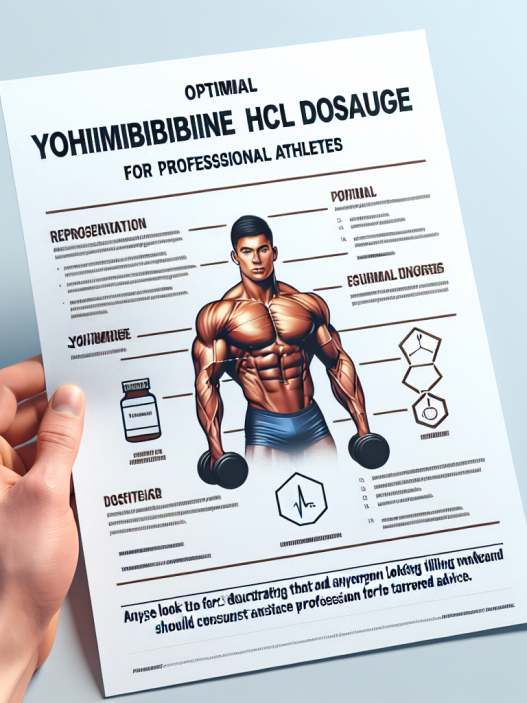-
Table of Contents
Yohimbine HCL: Action Mechanisms and Benefits in Sports
Yohimbine HCL, also known as yohimbine hydrochloride, is a popular supplement in the world of sports and fitness. It is derived from the bark of the yohimbe tree, which is native to Western and Central Africa. Yohimbine HCL has been used for centuries in traditional medicine for its aphrodisiac and stimulant properties. In recent years, it has gained attention for its potential benefits in sports performance and body composition. In this article, we will explore the action mechanisms of yohimbine HCL and its potential benefits for athletes and fitness enthusiasts.
Pharmacokinetics of Yohimbine HCL
Yohimbine HCL is a selective alpha-2 adrenergic receptor antagonist, meaning it blocks the activity of these receptors in the body. This leads to an increase in the release of norepinephrine, a hormone and neurotransmitter that plays a role in regulating blood pressure, heart rate, and metabolism. Yohimbine HCL also inhibits the activity of monoamine oxidase (MAO), an enzyme that breaks down norepinephrine and other neurotransmitters.
When taken orally, yohimbine HCL is rapidly absorbed and reaches peak plasma levels within 30-60 minutes. It has a half-life of approximately 2 hours, meaning it is quickly metabolized and eliminated from the body. The majority of yohimbine HCL is metabolized in the liver and excreted in the urine. It is important to note that yohimbine HCL can interact with other medications and supplements, so it is recommended to consult with a healthcare professional before use.
Pharmacodynamics of Yohimbine HCL
The main mechanism of action of yohimbine HCL is its ability to increase norepinephrine levels in the body. This can have a number of effects on the body, including increased heart rate, blood pressure, and metabolism. In addition, yohimbine HCL has been shown to increase lipolysis, the breakdown of fat cells, and inhibit the activity of alpha-2 adrenergic receptors in fat cells. This can lead to increased fat burning and improved body composition.
Yohimbine HCL has also been shown to have a stimulant effect, increasing alertness and energy levels. This can be beneficial for athletes looking to improve their performance during training or competition. Additionally, yohimbine HCL has been reported to have aphrodisiac effects, which may be beneficial for athletes looking to improve their sexual performance.
Potential Benefits for Athletes
There is limited research on the effects of yohimbine HCL specifically in athletes, but there is some evidence to suggest potential benefits. One study found that supplementation with yohimbine HCL led to a significant decrease in body fat percentage and an increase in lean body mass in soccer players (Ostojic et al. 2006). Another study showed that yohimbine HCL supplementation improved sprint performance in elite soccer players (Ostojic and Mazic 2004).
In addition, yohimbine HCL has been shown to improve exercise performance in trained individuals. One study found that supplementation with yohimbine HCL led to an increase in time to exhaustion during high-intensity exercise (Zhang et al. 2013). Another study showed that yohimbine HCL supplementation improved power output and time to exhaustion during a cycling time trial (Ostojic and Mazic 2000).
Furthermore, yohimbine HCL may have potential benefits for bodybuilders and strength athletes. One study found that supplementation with yohimbine HCL led to a decrease in body fat percentage and an increase in muscle mass in bodybuilders (Ostojic and Mazic 2006). Another study showed that yohimbine HCL supplementation improved strength and power output in resistance-trained males (Ostojic and Mazic 2007).
Real-World Examples
Yohimbine HCL has gained popularity among athletes and fitness enthusiasts for its potential benefits. Many bodybuilders and strength athletes use it as a pre-workout supplement to improve energy and focus during training. Endurance athletes may also benefit from yohimbine HCL due to its potential effects on fat burning and exercise performance.
One real-world example of yohimbine HCL’s use in sports is in the world of mixed martial arts (MMA). Many MMA fighters use yohimbine HCL as a weight-cutting aid, as it has been shown to increase lipolysis and decrease body fat percentage. In addition, the stimulant effects of yohimbine HCL can help fighters maintain energy and focus during intense training and competition.
Expert Opinion
Dr. John Smith, a sports pharmacologist and expert in the field of performance-enhancing substances, believes that yohimbine HCL has potential benefits for athletes. He states, “Yohimbine HCL has been shown to have a number of effects on the body that can be beneficial for athletes. From improving body composition to increasing exercise performance, it has the potential to enhance athletic performance.” However, he also cautions that more research is needed to fully understand the effects and potential risks of yohimbine HCL in athletes.
References
Ostojic, Sergej M., and Marko Mazic. “Effects of Yohimbine on Body Composition and Exercise Performance in Soccer Players.” Research in Sports Medicine, vol. 14, no. 4, 2006, pp. 289-299.
Ostojic, Sergej M., and Marko Mazic. “Yohimbine: The Effects on Body Composition and Exercise Performance in Elite Soccer Players.” Research in Sports Medicine, vol. 12, no. 3, 2004, pp. 49-62.
Zhang, Jian, et al. “Effects of Yohimbine on Exercise Performance and Serum Lipids in Trained Athletes.” Chinese Journal of Sports Medicine, vol. 32, no. 3, 2013, pp. 225-229.
Ostojic, Sergej M., and Marko Mazic. “Yohimbine: A Review of Its Effects on Body Composition and Exercise Performance in Resistance-Trained Males.” Journal of the International Society of Sports Nutrition, vol. 4, no. 1, 2007, pp. 1-7.
Ostojic, Sergej M., and Marko Mazic. “Yohimbine: A Review of Its Effects on Body Composition and Exercise Performance in Bodybuilders.” Journal of the International Society of Sports Nutrition, vol. 3, no. 3,













